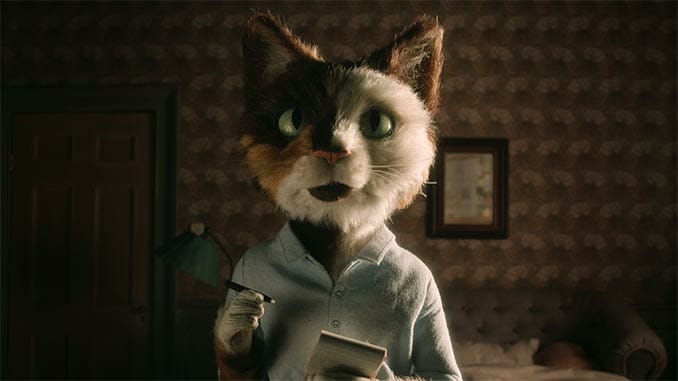Netflix’s Stop-Motion Anthology The House Revels in the Uncanny
Photo Courtesy of Netflix
Somewhere in the realm of Tim Burton meets Wes Anderson lurks Netflix’s new stop-motion anthology The House. Produced by Nexus Studios, the adult-oriented series tells three independent 30-minute stories about the humans and animals who live in the seemingly innocuous eponymous dwelling.
Directing the individual episodes are four indie animators: Belgium-based duo Emma de Swaef and Marc James Roels, Swedish director Niki Lindroth von Bahr, and British director/actress Paloma Baeza. The show’s premise feels like a creative writing prompt in the best way, and each director uses the house motif as a launchpad into their own weird worlds. The resulting stories take place in different time periods with different species, but there’s a cohesiveness across the episodes’ themes and offbeat humor. Marketed as a dark comedy, The House is less concerned with laugh-out-loud jokes than peculiar ironies as the series ruminates on what it means to renovate oneself.
Taking place in the 1800s, de Swaef and Roels’ “Chapter 1” follows Raymond (Matthew Goode), an impoverished man who suffers from insecurity about his family’s standing. When a strange architect offers to build him a new house for free, he leaps at the opportunity. The most straightforward of the three stories, the plot riffs off a haunted house setup. De Swaef and Roels effectively block space to set the mood. With its lack of furnishings, there’s a palpable chill to the house’s emptiness that contrasts with the crowded warmth of the family’s cottage. Dark corridors and winding stairs make its spatial logic hard to follow, adding to the unease.
The human-based puppets themselves have an expanse of space surrounding their tightly clustered facial features. Fleshy foreheads and plum cheeks obscure emotions, giving the puppets a default vacancy. Mia Goth impresses as Raymond’s daughter Mabel, imbuing pathos into the puppet form despite the limited expressions. There’s also a novelty in grounding the story in Mabel’s POV, rather than focusing solely on Raymond. The story is more predictable than its successors though, and the tight pacing restraints limit what could’ve been a more effective slowburn.
Von Bahr tackles the surreal “Chapter 2,” which takes place in modern times—only this time, our protagonist is an anthropomorphic rat. Voiced by former Pulp frontman Jarvis Cocker, the unnamed protagonist is a developer who’s sunk all his savings into flipping the house. Plagued by the bank and invading bugs, the developer stakes his self-worth on the project, and his desperation manifests into a frenetic energy. One memorable long-take focuses on the developer from behind as he explains kitchen features to open house visitors. Nothing the developer says is particularly untoward, but there’s something physically uncomfortable about watching the onlookers peel off one by one as he flails his arms.
“Chapter 2” is the standout of the trio, thanks to its heighted absurdities and caustic nature. While things don’t develop into full-blown horror, the story revels in grotesque animation when it comes to the creepy-crawlies. (It’s hard to resist the urge to check your sheets after the bombastic cockroach musical number.) The bugs also provide a nice antithesis to the developer’s need for control as Von Bahr explores the existential angst underlying his omnipresent headset and pressed suits.
-

-

-

-

-

-

-

-

-

-

-

-

-

-

-

-

-

-

-

-

-

-

-

-

-

-

-

-

-

-

-

-

-

-

-

-

-

-

-

-








































